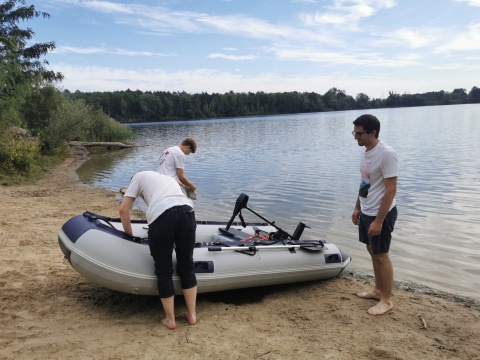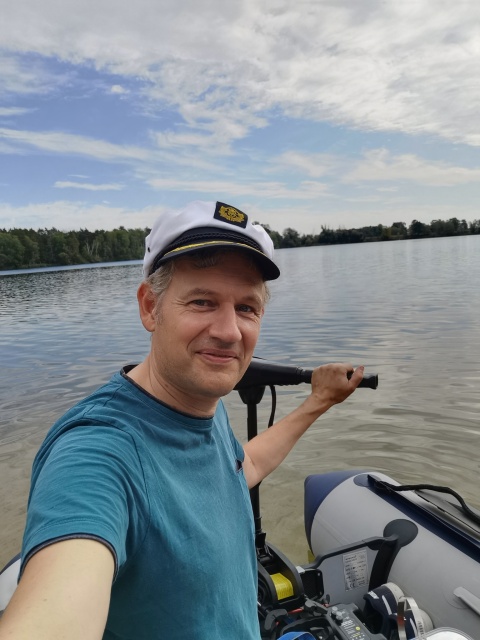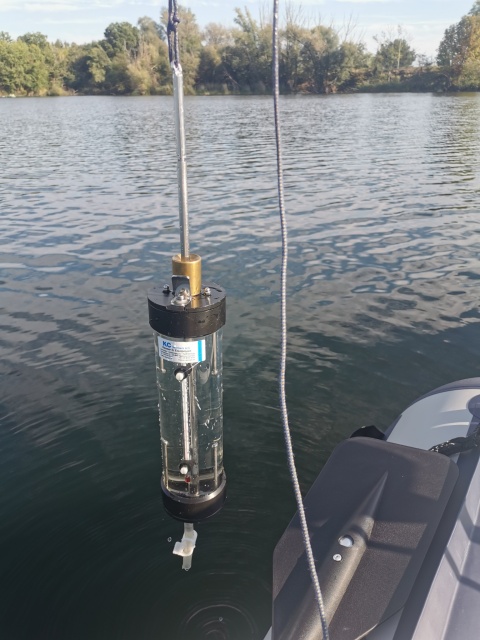KWB: Stormwater runoff monitoring and sampling of receiving lake

The new boat on its first mission to take samples from the Flughafensee lake. @KWB
The monitoring of stormwater runoff from two different industrial sites is part of the Berlin case study (CS#1). As planned, Kompetenzzentrum Wasser Berlin (KWB) completd the monitoring activities at the end of November 2023. Over the eight months of monitoring, which began in April 2023, 25 storm events were sampled at both sites and analysed for PFAS, other industrial compounds, and pesticides at the laboratory of Berliner Wasserbetriebe (BWB).
The results of the monitoring showed that 12 out of the 24 analysed PFAS, as well as a variety of other industrial chemicals and pesticides, were detected at elevated levels. Concentrations varied depending on, for example, duration of preceeding dry periods - the highest concentrations occurred after an extended dry period of about seven weeks in May and June.
The PFOA (Perfluorooctanoic acid) equivalent concentrations of 24 PFAS, as defined in the new proposal for EU surface water quality standards (EQS) to be 4.4 ng/L for surface waters, was exceeded in more than half of the samples, and by up to a factor of 10.
This means that stormwater discharged into surface waters might lead to exceedances of this threshold, depending on the dilution ratio of the stormwater in the receiving surface water, and the existing pollution levels in the surface water.
To evaluate the effect of stormwater runoff discharge to a smaller urban lake, samples were also taken from the Flughafensee lake in Berlin. This lake receives stormwater runoff from a wider catchment area, including runoff from the two investigated industrial catchments, as its only inflow. Since the lake is also close to a suspected PFAS contamination site at the airport, it could also be receiving PFAS via subsurface transport. The interesting question is how the stormwater inputs relate to concentrations in the lake. Samples were taken once during dry weather (see pictures) and also after a larger storm event which caused significant inflow of stormwater runoff into the lake. Initial results indicate that PFAS concentrations in the lake were even greater than those in the stormwater runoff. Sampling of groundwater monitoring wells around the lake is planned in 2024 to further investigate this issue.

Steering the boat: Captain Daniel Wicke. @KWB

The Ruttner-sampler. @KWB

Using a Ruttner-sampler to take water samples at different depths. @KWB
